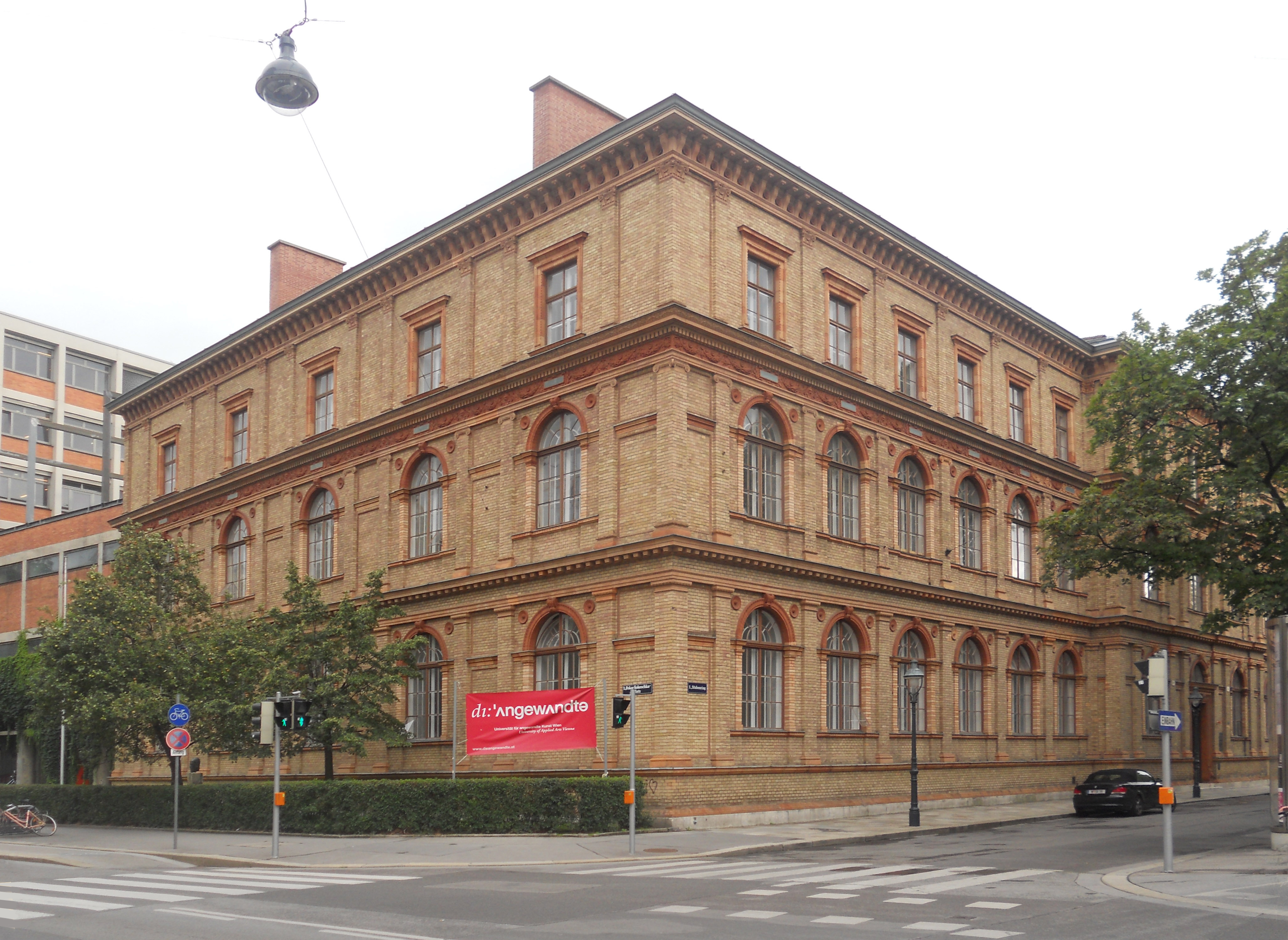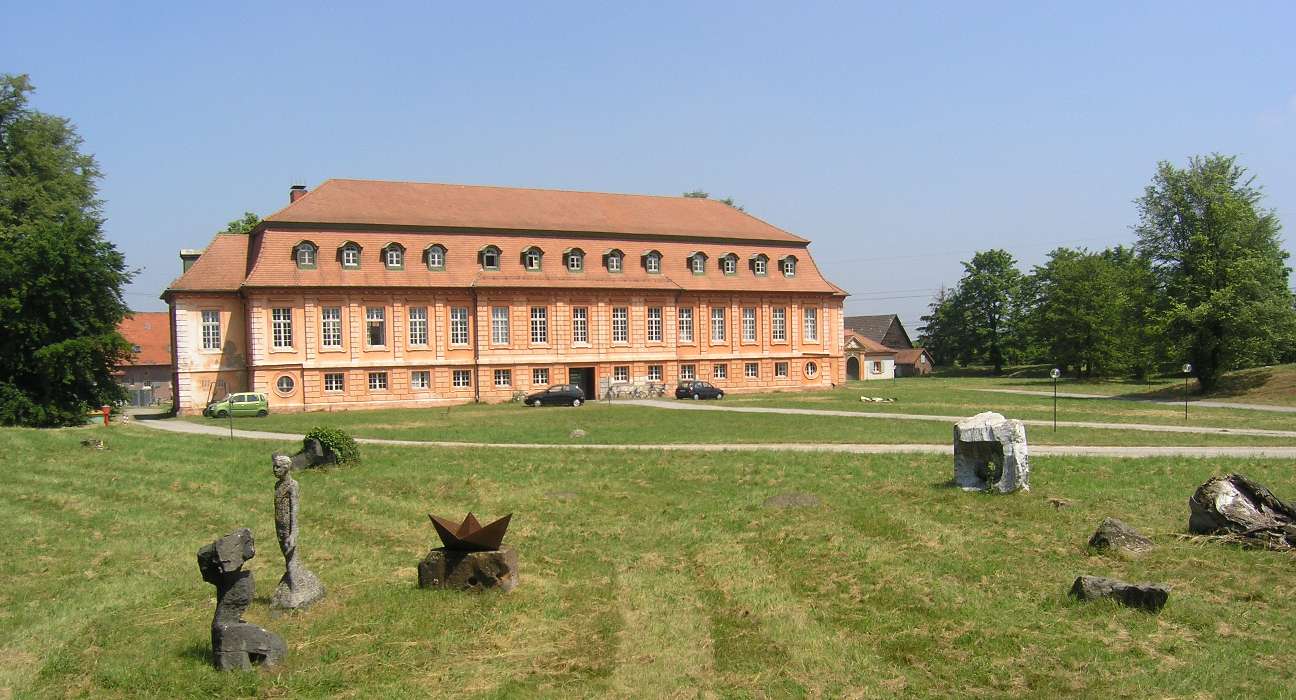|
Hermann Billing
Hermann Billing (February 7, 1867, Karlsruhe – March 2, 1946, Karlsruhe) was a German Art Nouveau architect and designer. He attended high school, Kunstgewerbeschule and architectural college, but completed none of them. Funded by his wealthy first wife, he started his work by taking part in competitions. He gained reputation for his avantgarde ideas and subsequently contracts for public buildings. After 1920, he was professor at the Academy of Fine Arts, Karlsruhe and the University of Technology. Image:Karlsruhe Hofapotheke.jpg, Court pharmacy building in Karlsruhe, 1901 Image:Marktplatz-Bretten.jpg, Melanchthonhaus (Bretten), 1903 Image:Karlsruhe Leopoldstr7cd.jpg, his own house in Karlsruhe, 1905 Image:Kunsthalle_Mannheim_Eingangsportal.jpg, Kunsthalle Mannheim, 1907 Image:Duisburg-Brückentürme der Friedrich-Ebert-Brücke.jpg, Bridge towers in Duisburg, 1907 Image:Hotel Bad Schachen 05.JPG, Hotel Bad Schachen in Lindau Lindau (, ''Lindau am Bodensee''; ; Low Alema ... [...More Info...] [...Related Items...] OR: [Wikipedia] [Google] [Baidu] |
Billing 1909
Billing may refer to: Invoicing *The process of sending an invoice (a bill) to customers for goods or services **Electronic billing **Medical billing, a payment practice within the United States health system **Telecommunications billing, systems and methods that collect information about calls and other services to be billed to the subscriber Places *Billing, Northamptonshire ** Billing Aquadrome, a leisure park in Great Billing, Northamptonshire **Billing Hall, Northamptonshire * Mount Billing, a mountain in the Antarctic named for Graham Billing *Rawdon Billing, a hill in West Yorkshire Other uses *Billing (surname) *Billing (birds), a behavior in some birds involving touching and clasping each other's bills *Billing (performing arts), the display of credits for a creative work *Billings ovulation method *Heinz Billing Prize, for the advancement of scientific computation * ''Billing'', hymn tune by R R Terry. See also * *Billinge (other) *Billingr, in Norse mytholo ... [...More Info...] [...Related Items...] OR: [Wikipedia] [Google] [Baidu] |
Karlsruhe
Karlsruhe ( ; ; ; South Franconian German, South Franconian: ''Kallsruh'') is the List of cities in Baden-Württemberg by population, third-largest city of the States of Germany, German state of Baden-Württemberg, after its capital Stuttgart and Mannheim, and the List of cities in Germany by population, 22nd-largest city in the nation, with 308,436 inhabitants. It is also a former capital of Baden, a historic region named after Hohenbaden Castle in the city of Baden-Baden. Located on the right bank of the Rhine (Upper Rhine) near the French border, between the Rhine-Neckar Metropolitan Region, Mannheim-Ludwigshafen conurbation to the north and Strasbourg to the south, Karlsruhe is Germany's legal center, being home to the Federal Constitutional Court, the Federal Court of Justice and the Public Prosecutor General (Germany), Public Prosecutor General. Karlsruhe was the capital of the Margraviate of Baden-Durlach (Durlach: 1565–1718; Karlsruhe: 1718–1771), the Margraviate of ... [...More Info...] [...Related Items...] OR: [Wikipedia] [Google] [Baidu] |
Art Nouveau
Art Nouveau ( ; ; ), Jugendstil and Sezessionstil in German, is an international style of art, architecture, and applied art, especially the decorative arts. It was often inspired by natural forms such as the sinuous curves of plants and flowers. Other characteristics of Art Nouveau were a sense of dynamism and movement, often given by asymmetry or whiplash lines, and the use of modern materials, particularly iron, glass, ceramics and later concrete, to create unusual forms and larger open spaces.Sembach, Klaus-Jürgen, ''L'Art Nouveau'' (2013), pp. 8–30 It was popular between 1890 and 1910 during the Belle Époque period, and was a reaction against the academicism, eclecticism and historicism of 19th century architecture and decorative art. One major objective of Art Nouveau was to break down the traditional distinction between fine arts (especially painting and sculpture) and applied arts. It was most widely used in interior design, graphic arts, furniture, glass ... [...More Info...] [...Related Items...] OR: [Wikipedia] [Google] [Baidu] |
Kunstgewerbeschule
A Kunstgewerbeschule (English: ''School of Arts and Crafts'' or S''chool of Applied Arts'') was a type of vocational arts school that existed in German-speaking countries from the mid-19th century. The term Werkkunstschule was also used for these schools. From the 1920s and after World War II, most of them either merged into universities or closed, although some continued until the 1970s. Students generally started at these schools from the ages of 16 to 20 years old, although sometimes as young as 14, and undertook a four-year course, in which they were given a general education and also learnt specific arts and craft skills such as weaving, metalwork, painting, sculpting, etc. Some of the most well known artists of the period had been Kunstgewerbeschule students, including Anni Albers, Peter Behrens, René Burri, Otto Dix, Karl Duldig, Horst P. Horst, Gustav Klimt, Oskar Kokoschka, Egon Schiele and Oskar Schlemmer. Many students accepted into the renowned Bauhaus art ... [...More Info...] [...Related Items...] OR: [Wikipedia] [Google] [Baidu] |
Academy Of Fine Arts, Karlsruhe
The State Academy of Fine Arts Karlsruhe or is an academy of arts in Karlsruhe, in Baden-Württemberg in south-western Germany. History The Academy was founded in 1854 by Frederick I, Grand Duke of Baden, with the landscape painter Johann Wilhelm Schirmer as the first director. During the Nazi regime, several artists were fired from their teaching positions, due to their art being considered " degenerate". These include, for example, Willhelm Schnarrenberger, Georg Scholz, and Karl Hubbuch - all of whom were associated with the New Objectivity movement. After the second world war, the academy re-opened first in 1947 and Schnarrenberger and Hubbuch eventually regained their positions. Post-war heads of the academy include art historian Oskar Gehring (1947/48), (1949–1956), art historian Kurt Martin (1956/57), painter (1957/58), and painter Hans Gaensslen (1958–1963). The latter became the first elected rector as, in 1961, policy was changed from ministry-appoint ... [...More Info...] [...Related Items...] OR: [Wikipedia] [Google] [Baidu] |
Melanchthonhaus (Bretten)
The Melanchthonhaus is a museum and research facility of the Protestant Reformation in Bretten, particularly on the life of Philipp Melanchthon Philip Melanchthon (born Philipp Schwartzerdt; 16 February 1497 – 19 April 1560) was a German Lutheran reformer, collaborator with Martin Luther, the first systematic theologian of the Protestant Reformation, an intellectual leader of the .... It includes an exhibition on his life, a research centre, a specialist library and a documentation centre of the international Melanchthon-Forschung. The library contains around 11,000 books about the history of the Reformation. It was built in 1897 on the site of Melanchthon's birthplace, which had been demolished in 1689. Its design by Johannes Vollmer was inspired by the church historian and theologian Nikolaus Müller. It was built by Hermann Billing and Wilhelm Jung and opened on 25 June 1903. External links Website of the Melanchthonhaus(with directions and opening hours) ... [...More Info...] [...Related Items...] OR: [Wikipedia] [Google] [Baidu] |
Kunsthalle Mannheim
The Kunsthalle Mannheim is a museum of modern and contemporary art, built in 1907, established in 1909 and located in Mannheim, Germany. Since then it has housed the city's art collections as well as temporary exhibitions – and up to 1927 those of the local as well as its administration. Collection The Kunsthalle's own collection comprises around 1,500 works by artists including Édouard Manet, Paul Cézanne, George Grosz and Wassily Kandinsky. The extension building from 2018 shows a major collection of works by Anselm Kiefer, 38 pieces on long-term loan from the businessman Hans Grothe. Architecture Designed by Hermann Billing, the building was erected as a temporary structure to serve an "International Art Exhibition" of 1907, commemorating the 300th anniversary of the foundation of the city. Originally meant to be torn down after this exhibition, the building was later transformed into a municipal art gallery. In 1909 the museum and the collection were opened under the fir ... [...More Info...] [...Related Items...] OR: [Wikipedia] [Google] [Baidu] |
Lindau
Lindau (, ''Lindau am Bodensee''; ; Low Alemannic German, Low Alemannic: ''Lindou'') is a major Town#Germany, town and Lindau (island), island on the eastern side of Lake Constance (''Bodensee'' in German) in Bavaria, Germany. It is the capital of the county (''Landkreis'') of Lindau (district), Lindau, Bavaria and is near the borders of the Austrian state of Vorarlberg, and the Switzerland, Swiss cantons of Canton of St. Gallen, St. Gallen and Canton of Thurgau, Thurgau. The coat of arms of Lindau town is a linden tree, referring to the supposed origin of the town's name. The historic town of Lindau is located on the island of the same name, which is connected with the mainland by a road bridge and a railway causeway leading to Lindau Hauptbahnhof, Lindau station. Lindau is located near the meeting point of the Austrian-German-Swiss tripoint and is nestled on the lake in front of Austria's Pfänder mountain. Lindau is popular with sightseers and vacationers for its medieval tow ... [...More Info...] [...Related Items...] OR: [Wikipedia] [Google] [Baidu] |
1867 Births
There were only 354 days this year in the newly purchased territory of Alaska. When the territory transferred from the Russian Empire to the United States, the calendric transition from the Julian to the Gregorian Calendar was made with only 11 days instead of 12 during the 19th century. This change was made due to the territorial and Geopolitics, geopolitical shift from the Asian to the American side of the International Date Line. Friday, 6 October 1867 ''(Julian Calendar)'' was followed by Friday again on 18 October 1867 (instead of Saturday, 19 October 1867 in the Gregorian Calendar). Events January * January 1 – The John A. Roebling Suspension Bridge, Covington–Cincinnati Suspension Bridge opens between Cincinnati, Ohio, and Covington, Kentucky, in the United States, becoming the longest single-span bridge in the world. It was renamed after its designer, John A. Roebling, in 1983. * January 8 – African-American men are granted the right to vote in the District ... [...More Info...] [...Related Items...] OR: [Wikipedia] [Google] [Baidu] |
1946 Deaths
1946 (Roman numerals, MCMXLVI) was a common year starting on Tuesday of the Gregorian calendar, the 1946th year of the Common Era (CE) and ''Anno Domini'' (AD) designations, the 946th year of the 2nd millennium, the 46th year of the 20th century, and the 7th year of the 1940s decade. Events January * January 6 – The 1946 North Vietnamese parliamentary election, first general election ever in Vietnam is held. * January 7 – The Allies of World War II recognize the Austrian republic with its 1937 borders, and divide the country into four Allied-occupied Austria, occupation zones. * January 10 ** The first meeting of the United Nations is held, at Methodist Central Hall Westminster in London. ** ''Project Diana'' bounces radar waves off the Moon, measuring the exact distance between the Earth and the Moon, and proves that communication is possible between Earth and outer space, effectively opening the Space Age. * January 11 – Enver Hoxha declares the People's Republic ... [...More Info...] [...Related Items...] OR: [Wikipedia] [Google] [Baidu] |
Art Nouveau Architects
Art is a diverse range of cultural activity centered around ''works'' utilizing creative or imaginative talents, which are expected to evoke a worthwhile experience, generally through an expression of emotional power, conceptual ideas, technical proficiency, or beauty. There is no generally agreed definition of what constitutes ''art'', and its interpretation has varied greatly throughout history and across cultures. In the Western tradition, the three classical branches of visual art are painting, sculpture, and architecture. Theatre, dance, and other performing arts, as well as literature, music, film and other media such as interactive media, are included in a broader definition of "the arts". Until the 17th century, ''art'' referred to any skill or mastery and was not differentiated from crafts or sciences. In modern usage after the 17th century, where aesthetic considerations are paramount, the fine arts are separated and distinguished from acquired skills in general, ... [...More Info...] [...Related Items...] OR: [Wikipedia] [Google] [Baidu] |





